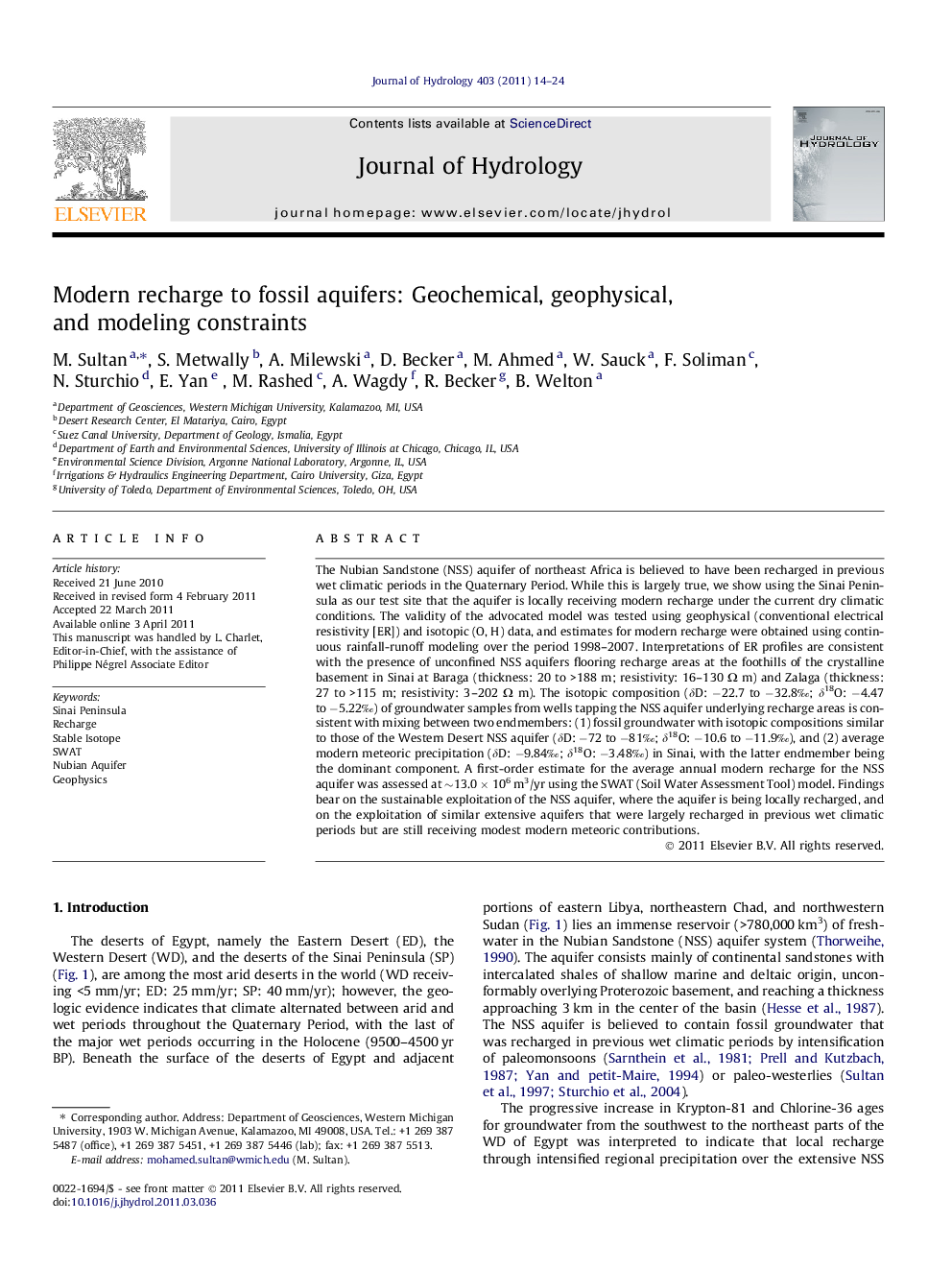| Article ID | Journal | Published Year | Pages | File Type |
|---|---|---|---|---|
| 4577644 | Journal of Hydrology | 2011 | 11 Pages |
The Nubian Sandstone (NSS) aquifer of northeast Africa is believed to have been recharged in previous wet climatic periods in the Quaternary Period. While this is largely true, we show using the Sinai Peninsula as our test site that the aquifer is locally receiving modern recharge under the current dry climatic conditions. The validity of the advocated model was tested using geophysical (conventional electrical resistivity [ER]) and isotopic (O, H) data, and estimates for modern recharge were obtained using continuous rainfall-runoff modeling over the period 1998–2007. Interpretations of ER profiles are consistent with the presence of unconfined NSS aquifers flooring recharge areas at the foothills of the crystalline basement in Sinai at Baraga (thickness: 20 to >188 m; resistivity: 16–130 Ω m) and Zalaga (thickness: 27 to >115 m; resistivity: 3–202 Ω m). The isotopic composition (δD: −22.7 to −32.8‰; δ18O: −4.47 to −5.22‰) of groundwater samples from wells tapping the NSS aquifer underlying recharge areas is consistent with mixing between two endmembers: (1) fossil groundwater with isotopic compositions similar to those of the Western Desert NSS aquifer (δD: −72 to −81‰; δ18O: −10.6 to −11.9‰), and (2) average modern meteoric precipitation (δD: −9.84‰; δ18O: −3.48‰) in Sinai, with the latter endmember being the dominant component. A first-order estimate for the average annual modern recharge for the NSS aquifer was assessed at ∼13.0 × 106 m3/yr using the SWAT (Soil Water Assessment Tool) model. Findings bear on the sustainable exploitation of the NSS aquifer, where the aquifer is being locally recharged, and on the exploitation of similar extensive aquifers that were largely recharged in previous wet climatic periods but are still receiving modest modern meteoric contributions.
► We investigated the origin of Nubian Sandstone (NSS) fossil aquifer in the Sinai Peninsula. ► NSS aquifer was largely recharged in wet climatic periods yet receives local recharge in dry periods. ► Results were validated using geophysical and isotopic data, and continuous rainfall runoff models. ► Groundwater isotopic compositions in recharge areas are similar to those of modern precipitation. ► Average annual modern recharge for Sinai’s NSS aquifers was assessed at ∼13.0 million m3/yr.
